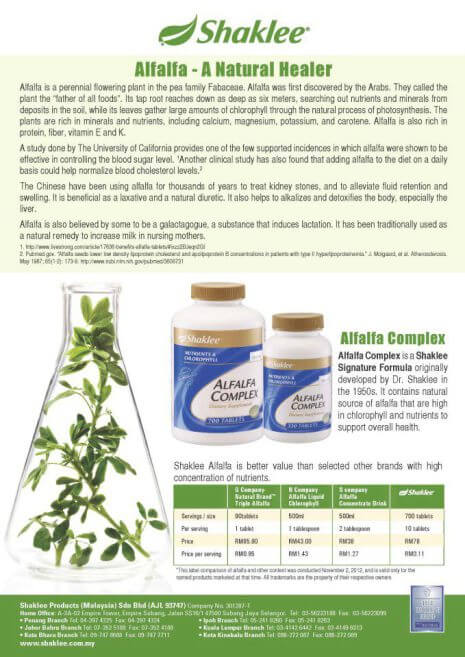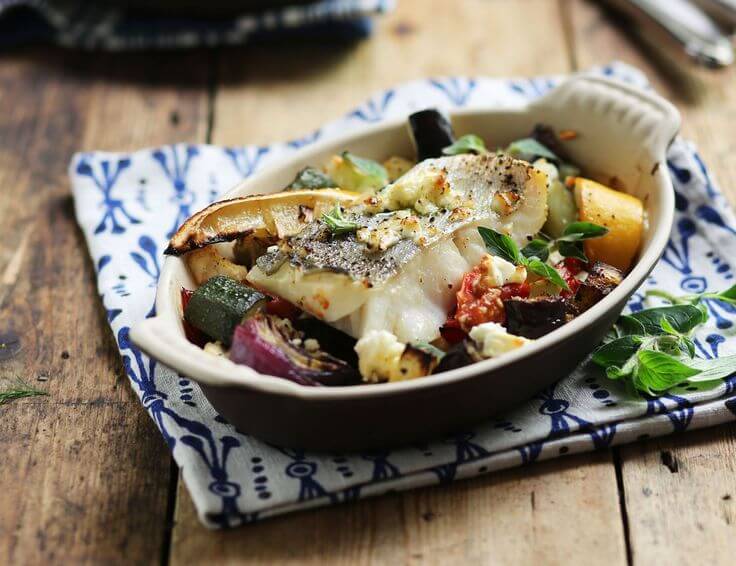Forum Replies Created
-
AuthorPosts
-
 Keith TaylorParticipant
Keith TaylorParticipant
Sorry Gary,
Personally, I know very little about alfalfa tablets for gout. I can’t find any research linking them to control of uric acid. Or control of gout pain.
However, I searched GoutPal for alfalfa, and there are some results. So, perhaps they mean something. But I’m struggling to see any connection between alfalfa tablets and gout.
Does anyone else have experience of alfalfa for gout?

Does Alfalfa work for Your Gout?
 Keith TaylorParticipant
Keith TaylorParticipantMy last uric acid report was in 2013 and it read 504 which in Canada is an acceptable level since the normal levels are 234-259.
Hi Gary,
Please can you check your test result history with your doctor. Then post as many results, with dates, as you can get. Because, those numbers don’t make sense to me. If it’s easier to send photographs of your reports, you can do that via the GoutPal Helpdesk.
 Keith TaylorParticipant
Keith TaylorParticipantFirstly, Sandeep, I’m planning to spend my 60th birthday next year, in Goa. So, if you know any places that you recommend visiting, please tell me in the General Discussion forum.
For your diet, protein is good for gout. That gets misunderstood, because most high protein foods are animal flesh. But vegetarian protein sources, and dairy products are good for lowering uric acid. However, you need to avoid too much protein. Because, it puts an acid load on the kidneys, which can reduce uric acid production.
Excess sugar isn’t good for gout. But, dairy fat shouldn’t be a problem. So, no need for low-fat milk or cheese. However, you still need to control calorie intake. Because too much fat can make you overweight, which is very bad for gout.
Generally, allopurinol should mean that you can eat anything you like. As long as you remember weight control and a good mix of healthy whole foods. But, it takes several months to work fully. So, it is usual to experience some gout symptoms at first. But, you are doing the right thing in getting uric acid checked. So, let’s hope you will soon be fully recovered.
 Keith TaylorParticipant
Keith TaylorParticipantIt looks like every gout sufferer is going crazy for pollack recipes! So, here’s a healthy recipe for pollock that I found on a UK website (abelandcole.co.uk). USA gout sufferers might need to translate:
Aubergine = Eggplant (But, I prefer it as Brinjal, in Indian pickle).
Courgette = Zucchini.
200°C = 400°F.
180°C = 350°F.
Anything else need translating?Ingredients for 2 people
1 aubergine
2 courgettes
2 tomatoes
1 red onion
1 garlic clove
1 lemon
100g feta
2 pollock fillets
50g baby leaf spinach
A handful of oregano
1 tsbp olive oil
Sea salt
Freshly ground pepperMethod
1. Heat your oven to 200°C/Fan 180°C/Gas 6. Trim the ends of the aubergine and courgettes. Chop the veg into 2 cm thick slices, then cut into cubes. Cut the tomatoes into quarters. Halve, peel and thickly slice the onion.
2. Peel and grate the garlic into a large bowl. Whisk with 1 tbsp oil and plenty of salt and pepper. Tumble all the veg into the bowl and toss together to coat the veg in the garlicky oil.
3. Tip the veg onto a baking tray and spread them out into a single layer. Slide it into the oven and roast for 30 mins. The veg should be charred and softened. Toss halfway through. Zest and juice half the lemon.
4. After the veg has cooked for 30 mins, place the pollock fillets on top of the veg, skin-side up. Crumble over the half pack of feta (see our tip below for what to do with the rest). Slide back into the oven and cook for 10 mins till the fish is just cooked through and the feta is golden. The fish will be white and flake easily when pressed with a fork.
5. Remove the tray from the oven. Divide the spinach between 2 plates. Drizzle with a little lemon juice. Spoon over the roasted veg and top with a piece of fish each. Scatter over the lemon zest and oregano leaves. Squeeze over wedges of the remaining lemon to taste.Enjoy! 😀
 Keith TaylorParticipant
Keith TaylorParticipantCarolyn’s mention of Pepto Bismol has attracted some interest from gout sufferers who use that particular antacid. However, Pepto Bismol should be avoided by gout sufferers.
I still cannot find any specific advice on the best antacid for gout sufferers. However, in the pre-market trials of febuxostat, some tests were done on the effects of antacids. In that case, a mixture of aluminium hydroxide and magnesium hydroxide was used. Brands of antacids that use this mixture include:
– Alamag®
– Alumina and Magnesia®
– Antacid (aluminum-magnesium)®
– Antacid M®
– Antacid Suspension®
– Gen-Alox®
– Kudrox®
– M.A.H.®
– Maalox HRF®
– Maalox T.C.®
– Magagel®
– Magnalox®
– Maldroxal®
– Mylanta® Ultimate
– Ri-Mox®
– Rulox® Keith TaylorParticipant
Keith TaylorParticipantFirstly, I should thank the recent contributors for their remarks about pomegranate juice and gout. So, inspired by the interest shown in pomegranate for uric acid, I checked recent research:
1. Anti-urolithiatic effects of Punica granatum in male rats. N R Rathod et al. Journal of ethnopharmacology, March 2012. Pomegranate juice had a significant uric acid lowering effect in rats.2. Fruit juice drinks prevent endogenous antioxidant response to high-fat meal ingestion. Cristiana Miglio et al. The British journal of nutrition August 2013. This studies many fruit juices, one of which is pomegranate. It shows that uric acid normally increases in humans, after eating a high-fat meal. However, drinking fruit juices with the meal reduced this rise in uric acid.
3. Benefits of pomegranate (Punica granatum Linn) fruit extracts to weight changes, total protein, and uric acid in white rats (Rattus norvegicus) as an animal model of acute renal failure. Hardany Primarizky et al. Vet World, Nov 2016. Inducing kidney failure in rats raised uric acid levels. But, pomegranate extracts returned uric acid to normal.
Note that none of these studies are real gout studies. So, they do not prove that pomegranate can reduce uric acid in gout patients. But, they do suggest you might like to try.
 Keith TaylorParticipant
Keith TaylorParticipantRadioactive Water
As this is a popular topic, I decided to look for current research. As I expected, there are very few studies about gout and carbonated water. However, I was surprised by the following (from Drinking mineral waters: biochemical effects and health implications – the state-of-the-art in the International Journal of Environmental health):
it is suggested to drink these waters as they gush from the spring to avoid the element decay and thus the therapeutic properties decrease. […] The therapeutic property of radioactive waters seems related to the energy released by the radioactive elements that yield excitation and ionisation properties. The therapeutic uses of radioactive waters concerns the treatment of osteo-articular diseases, gout and of diuresis stimulation (Gans, 1985; Bartoli et al., 1989; Amrani and Cherouati, 1999).
 Keith TaylorParticipant
Keith TaylorParticipantI’d always aim lower as quickly as possible. But, I’m happy that your latest question has once again set me off on new research. Actually, it’s updates from Start Allopurinol Quickly, But Carefully, which I mentioned in my recent Gout Gamechangers post. More researchers have agreed that waiting for gout flares to resolve is not usually good for uric acid control. But, they also emphasize the need to manage on a case-by-case basis. So, basically, it’s up to you.
However, I’d like to share my logic. Because, I believe there are benefits from getting well below 300μmol/l uric acid. To explain, the risk comes from partially dissolved crystals. So, if uric acid in the blood is lower, that reduces the time that crystals are partially dissolved. Therefore, it reduces the risk of flares occurring from debulking.
Finally, I’ve often stated there is no lower limit. However the latest guidelines from European rheumatologists suggest that we shouldn’t maintain uric acid below 3mg/dL for long periods. Because, there is some evidence to suggest that:
uric acid might protect against various neurodegenerative diseases such as Parkinson’s disease, Alzheimer’s disease or amyotrophic lateral sclerosis
Of course, that doesn’t mean that we should not consider very low levels to speed the debulking process. But, we have to weigh up all the personal aspects of each individual case. Unfortunately, it’s hard to find doctors who have the time to explain every last detail.
 Keith TaylorParticipant
Keith TaylorParticipantI’ve reviewed information about allopurinol causing itching skin. I think the main worry might be that it’s associated with the dreaded allopurinol hypersensitivity rash. But that should now be a thing of the past, given the screening process that is now available for at-risk groups. So for more information, see the screening article linked to Allopurinol Side Effects.
In addition, I’m reminded of an old discussion about allopurinol and itching. In it, I identified a few procedural aspects of allopurinol therapy that might reduce itching and other side-effects. So, from the archive:
- Before taking allopurinol, it is important to have kidney function tests. Any kidney deficiency can render allopurinol unsuitable.
- You should be advised that allopurinol treatment can cause gout flares at first and discuss your choice of preventative anti-inflammatory treatment, or pain killers as you need them.
- You should be advised to drink plenty of fluids when you take allopurinol, though as a gout patient you should be doing this anyway.
- You should be advised about allopurinol side effects, distinguishing from those that are harmless, and those that should prompt immediate consultation with your doctor.
- You should be asked to return every few weeks for uric acid tests and dosage review.
Of course, this is just my view from my ivory tower of gout research. I suspect that frontline custom and practice differ. So, I’d love to hear about the procedures and advice experienced by gout patients when they are first prescribed allopurinol.
In any case, isn’t this type of itching simply a common symptom of a low-level gout flare?
 Keith TaylorParticipant
Keith TaylorParticipantYes, d_q! More specifically, Yorkshire born and bred. Maybe I cause confusion by affecting USA spelling most of the time. But, that’s out of respect for my American readers, who make up the vast majority of my audience.
With regard to accurate uric acid monitoring at home, there is some significance. Because the uric acid test kit that I am familiar with is UK based UASure. However, they sell and support their kit worldwide. So, as well as first-line support from the global distributors, I can give first-hand experience as well. And, if it’s ever required, it’s easy for me to contact the distributor to resolve any issues.
 Keith TaylorParticipant
Keith TaylorParticipantNon-alcoholic beer has been discussed in the old forum. It’s an interesting discussion, but it wandered well away from the original post about Near Beer and gout. Please feel free to repeat any of those interesting points to discuss them again here. Or, start new topics about them.
As for research into gout and non-alcoholic beer, I believe there has only ever been one study. So, Eastmond’s “The effects of alcoholic beverages on urate metabolism in gout sufferers.” is widely referred to. Including, references to the drinks being tested were vodka with orange juice, regular beer, non-alcoholic beer, and orange juice But, I’ve only ever read the abstract:
The purine contents of commercial, low-alcohol and alcohol-free beers were determined. Four gout sufferers were studied under controlled conditions before and after ingestion of four different beverages containing alcohol, alcohol and purine, purine and neither alcohol nor purine.
The results show a significant increase in purine excretion with a fluid load alone and impairment or reversal of this response with the other three beverages.
These results are difficult to interpret on the basis of the alcohol and purine contents of the beverages alone. Isohumulones are present in all beers. Their effect on urate metabolism and excretion is unknown but needs further study as a possible explanation of these results.
These results suggest that the three beverages other than a fluid load alone are unsuitable for gout sufferers.
Unfortunately, that tells me nothing, as I can’t find the data to which it relates. So, in my mind at least, it’s probably another complete waste of time that misses the point. My point being: why do you drink so much beer, alcoholic or non-alcoholic, that it affects your gout? Alcohol, like meat, has little effect on gout, when consumed at healthy levels.

How much non-alcoholic beer does it take to affect gout?
Here are the important links to relevant facts from the introduction to this topic:
- Purine free beer
- See the Beer Purine Table, a chart of the uric acid content of many drinks with some explanations of how different purines affect gout.
- Is non-alcoholic beer bad for gout?
- Before you consider non-alcoholic beer, read Best Alcohol For Gout.
 Keith TaylorParticipant
Keith TaylorParticipantI’m really sorry Robert, I completely missed your post last year. I’ve just spotted it while tidying. So, I moved it here.
I completely agree with your points about customer service. To me, it is the most important part of buying a uric acid tester. Because, without good customer support, you are probably wasting your money.
Anyway, if you still want to buy a meter, let me know. I can recommend a source who supplies to the USA, and has good customer support.
 Keith TaylorParticipant
Keith TaylorParticipantYes, d_q, I got whichever pH strips were best value at the time from Amazon. However, I find color matching the little squares a little awkward in this digital age. So, I’m aiming to get a meter. Because, not only will that make testing easier. But, also, I like to include words like “aiming” when I’m discussing this topic. 😀
 Keith TaylorParticipant
Keith TaylorParticipantThat’s a great post, Gavin! I love lots of data, as it helps me draw real conclusions rather than guessing.
In conclusion, I agree your detailed readings match a Gout Hell scenario. Also, your diet seems healthy enough. Although I don’t have portion sizes to quantify that view. But, the true tests of diet are mainly covered by 2 simple measurements:
– Firstly, your weight. Because if this is slowly falling, you should see a small fall in uric acid numbers. But, I think we should wait for your doc’s input before taking that any further.
– Secondly, your urine pH. Because that tells you if you are getting the right proportion of fruit and veg in your diet. Then, if pH is less than 6.5, swap some foods for healthier options. For example, swap a slice of bread for spinach. Or, a little less cheese for a little more onion. Slow changes in the right direction are easier and more sustainable than sudden big changes.
Finally, I can’t wait to read your doctors opinions and advice. Hopefully, we can all work together to make sure 2017 is the only year you’ll ever suffer gout pain.
 Keith TaylorParticipant
Keith TaylorParticipantThanks for that extra information, urankjj. Hopefully, it helps me frame my answer in a way that is relevant to your situation. But, we’re still getting to know each other. So, if I get it wrong, please just ask me to clarify.
Firstly, I have bad news. Because, there is no gout research into malic acid. Except for a one line mention of a German book – Der Apfel (The Apple: A tried and tested new home remedy) – in the European Journal of Clinical Nutrition. But, I can’t verify the claim in that journal that:
it is known that malic acid dissolves uric acid, and is therefore an important source of relief when someone suffers from gout or rheumatism (Buchter-Weisbrodt and Schöber, 1998)
Unfortunately, I cannot find an English translation of that book. So, I’m not certain how true that claim is. Also, if it is true, I wonder why there has been no pure gout research into effects of malic acid on uric acid.
However, there is some verifiable science that malic acid should help gout sufferers. Because, according to one investigation I found (“Malic acid supplementation increases urinary citrate excretion and urinary pH”), malic acid can improve urine pH. So, it should help gout sufferers in 2 ways:
1. Alkaline urine prevents uric acid kidney stones.
2. Alkaline urine promotes uric acid excretion.Before I continue, I should stress that I prefer healthy diet to achieve alkaline urine. Because I believe using supplements to mask unhealthy diet will lead to other health problems beyond gout. But, you might have a different view.
Thanks to your question, I can see that there is lots of new research on the benefits of alkaline urine for gout sufferers. So, I ought to try and find time to review it. But, that’s a long way from saying malic acid is good for gout. Because, you need to consider total diet. Also, you need to measure uric acid with, and without, malic acid supplementation.
At the moment, urankjj, you seem to be making positive steps to control your gout. But, I hope you don’t mind me saying, your approach could be more scientific. Because, you cannot judge how successful gout treatment is based on short term gout flare symptoms. You can only manage gout by testing uric acid and comparing results with interventions. Now, it’s up to you how you take that. I mean to say that I can help you with a more carefully planned approach, if you want that.
But if you prefer to manage gout in your own way, that’s perfectly OK too. Then, you can ask me questions as they occur to you. Because, I’m here to help in whichever way suits you best.
 Keith TaylorParticipant
Keith TaylorParticipantGavin, it sounds to me that you’re in a place I call Gout Hell.
To explain, uric acid crystals often bite twice. Firstly, when new crystals form, our immune system triggers the painful inflammation process. Our white blood cells often fight the invading crystals silently. But, when they have to call for reinforcements, we get inflammation in the form of a gout attack. As an aside, colchicine can block that process. Though, it does nothing for inflammation once it has started. So, I often recommend a combination of colchicine and naproxen (or similar anti-inflammatory).
Secondly, when uric acid levels fall below the crystallization point, old crystals start to dissolve. Now, the crystallization point varies from person to person. Also, it varies in different parts of our bodies, and at different times. But, typically, it’s in the 0.35-4.0 range. So, as crystals start to dissolve, they are visible to our immune system again. Not only that, but the dissolved uric acid can push levels up again, causing new crystals to form.
So, Gout Hell is a place where our immune system is constantly challenged by old crystals dissolving, and new ones forming. Which means:
1) You need a gout pain control package that is more effective than naproxen alone. Modern thinking is to combine it with other drugs. So, I’ve mentioned colchicine. But it’s not for everyone. However, naproxen/paracetamol combos are often very effective. Anyway, there’s thousands of combinations that will keep gout pain under control while you enjoy your life. So, you need to discuss this with your doctor.
2) You need a uric acid control package that gets your uric acid safe asap. Then, once you’ve recovered from your current uric acid burden, you can take a longer term view about lifestyle changes that might reduce your reliance on uric acid lowering meds.
I can help you as much as you want me to. Either continue to ask casual questions like this topic. Or make a bigger time commitment in a personal gout diary. Possibly leading to structured gout help plans. It’s completely up to you how you use my gout support services. Just remember, I’m here whenever you need me.
 Keith TaylorParticipant
Keith TaylorParticipantSandeep, I’m sorry to say this. But, your doctor is a fool. Or, at least, he knows very little about gout. Asparagus is good for gout. Mushrooms are neutral. And small amounts of meat once or twice a month make very little difference.
I vaguely recall saying to you, in another topic, that you need not worry about purines. Just ensure you have a healthy diet. I know that Indian diet is different from Western diet. Which is why I directed you to an Indian nutrition website. I’ve never heard of an eggetarian diet before. But, I understand it is a vegan diet with eggs. If that means you avoid milk and cheese, it could cause gout problems. But, allopurinol will take care of that. So, stop worrying.
When uric acid lowering medicines (febuxostat, allopurinol, or anything else) is prescribed, a sensible doctor will also prescribe pain relief for up to six months. There are thousands of combinations of pain relief suitable for gout pain. I hope you can find a doctor, or pharmacist who can help you with a pain relief package. If not, I’ll try my best to advise you. I explain why you need pain relief in Allopurinol Medication: Why It Hurts To Get Rid Of Gout. But, although I focus on allopurinol, the same thing happens with febuxostat. Because gout recovery can hurt. But, if you keep your uric acid below 5mg/dL, any gout symptoms will get less frequent, and less intense.
In conclusion:
1. Stop worrying about diet. But, if you have specific concerns, please ask me for clarification.
2. Stick with one of your uric acid lowering therapies, and get blood tests every month for 6 months. Post your test results in your personal gout diary. Then, we can make sure you are keeping your uric acid safe.
3. Make sure you have access to good gout pain relief for 6 months. You won’t need it every day. But, it’s good to know it’s there when you need it.I recently decided to celebrate my 60th birthday in India during February/March 2018. It will be great to combine that with celebrating your Gout Freedom! 🙂
-
AuthorPosts

